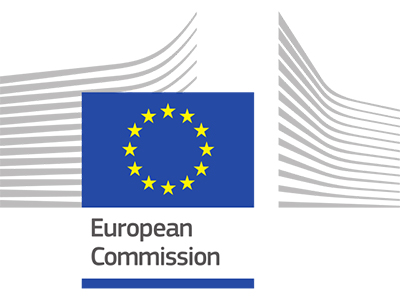Description
The main objective of the project is development of new lead-free multiferroic materialshe for prospective application in forms of films and/or arranged layers in which the cross-coupling (magnetic-dipolar-elastic) can be tuned by both internal and external factors. This objective is to be achieved through preparation, investigation, and optimization of two kinds of Bi-containing oxygen-octahedral (BCOO) systems with paramagnetic ions involved: metastable perovskites and layered double hydroxides (LDHs). The characteristic feature of such materials is a possibility of supplementary control parameters in addition to temperature and external electric/magnetic field. Polarization in such metastable perovskites is easily switched by application of external pressure (or stress in the case of films). Electric and magnetic characteristics of BCOO LDHs are tuned through appropriate anion exchanges. It makes these characteristics dependent on environment conditions: humidity, pH, and presence of specific anion species. The BCOO materials of both mentioned groups are of interest as new and unusual multiferroics. No LDH materials have been considered as potential multiferroics so far, while the metastable BCOO materials proposed in this project have not been obtained before. Besides, a tuneability and high sensibility of their properties to external impacts make them promising for applications in sensors. Exploration and development of such materials require consolidation of specialists of complementary expertise in Physics, Chemistry, and Materials Science, with access to and skills in using specific and unique equipment and facilities. Therefore, formation of an interdisciplinary network of teams with different scientific culture and ensuring the effective knowledge & expertise transfer is important objective of the project. Advance in development of the BCOO multiferroics has potential market opportunities for R&D SME involved in this project.
Coordinator
Coordination
Universidade de Aveiro (UA)
Partners
University of Aveiro (Portugal), University of Duisburg-Essen (Germany), Science & Technology Facilities Council - ISIS (UK), Vilnius University (Lithuania), Helmholtz-Zentrum Geesthacht (Germany), Smallmatek LDA (Portugal), Scientific-Practical Materials Research Centre (Belarus), Institute for Low Temperature Physics and Engineering (Ukraine).
Outputs
Lanthanide substitution effects in iron containing garnets
Opuchovic, O; Salak, AN; Rehspringer, JL; Kareiva, AThe phenomenon of conversion polymorphism in Bi-containing metastable perovskites
Khalyavin, DD; Salak, AN; Fertman, EL; Kotlyar, OV; Eardley, E; Olekhnovich, NM; Pushkarev, AV; Radyush, YV; Fedorchenko, AV; Desnenko, VA; Manuel, P; Ding, L; Cizmar, E; Feher, AImpact of temperature dependent octahedra distortions on magnetic properties of Co-containing double layered hydroxides
Babkin, RY; Pashkevich, YG; Fedorchenko, AV; Fertman, EL; Desnenko, VA; Prokhvatilov, AI; Galtsov, NN; Vieira, DEL; Salak, ANHigh-temperature electrical conductivity of the xNBT-(1-x)LMT ceramics: verification of Meyer-Neldel rule
Rudys, S; Ivanov, M; Grigalaitis, R; Glemza, K; Banys, J; Rubanik, VV; Shilin, AD; Salak, ANTemperature-Induced Structural Transformations in Undoped and Eu3+ -Doped Ruddlesden-Popper Phases Sr2SnO4 and Sr3Sn2O7: Relation to the Impedance and Luminescence Behaviors
Stanulis, A; Katelnikovas, A; Salak, AN; Seibutas, P; Ivanov, M; Grigalaitis, R; Banys, J; Kareiva, A; Ramanauskas, R; Barron, ARSonication accelerated formation of Mg-Al-phosphate layered double hydroxide via sol-gel prepared mixed metal oxides
Sokol, D; Vieira, DEL; Zarkov, A; Ferreira, MGS; Beganskiene, A; Rubanik, VV; Shinn, AD; Kareiva, A; Salak, ANDielectric properties of Bi-substituted LDHs synthesized by co-precipitation and sol-gel methods
Sokol, D; Ivanov, M; Salak, AN; Grigalaitis, R; Banys, J; Kareiva, ABi-substituted Mg3Al-CO3 layered double hydroxides
Sokol, D; Salak, A; Ferreira, MGS; Beganskiene, A; Kareiva, ASol-gel synthesis and characterization of hybrid inorganic-organic Tb(III)-terephthalate containing layered double hydroxides
Smalenskaite, A; Salak, AN; Ferreira, MGS; Skaudzius, R; Kareiva, ASol Gel Derived Lanthanide-Substituted Layered Double Hydroxides Mg-3/Al(1-x)Ln(x)
Smalenskaite, A; Sen, S; Salak, AN; Ferreira, MGS; Beganskiene, A; Kareiva, ATemperature-Induced Reversible and Irreversible Transitions between Metastable Perovskite Phases in the BiFe1-yScyO3 Solid Solutions
Salak, AN; Khalyavin, DD; Eardley, E; Olekhnovich, NM; Pushkarev, AV; Radyush, YV; Shilin, AD; Rubanik, VVInduced neodymium luminescence in sol-gel derived layered double hydroxides
Smalenskaite, A; Salak, AN; Kareiva, AUnusual magnetic properties of the polar orthorhombic BiFe0.5Sc0.5O3 perovskite
Fedorchenko, AV; Fertman, EL; Salak, AN; Desnenko, VA; Cizmar, E; Feher, A; Vaisburd, AI; Olekhnovich, NM; Pushkarev, AV; Radyush, YV; Zarkov, A; Kareiva, AMagnetic phenomena in Co-containing layered double hydroxides
Vieira, DEL; Salak, AN; Fedorchenko, AV; Pashkevich, YG; Fertman, EL; Desnenko, VA; Babkin, RY; Cizmar, E; Feher, A; Lopes, AB; Ferreira, MGSA comparative study of co-precipitation and sol-gel synthetic approaches to fabricate cerium-substituted Mg-Al layered double hydroxides with luminescence properties
Smalenskaite, A; Vieira, DEL; Salak, AN; Ferreira, MGS; Katelnikovas, A; Kareiva, AMultiferroic Bi0.65La0.35Fe0.5Sc0.5O3 perovskite: Magnetic and thermodynamic properties
Fertman, EL; Fedorchenko, AV; Khalyavin, DD; Salak, AN; Baran, A; Desnenko, VA; Kotlyar, OV; Cizmar, E; Feher, A; Syrkin, ES; Vaisburd, AI; Olekhnovich, NM; Pushkarev, AV; Radyush, YV; Stanulis, A; Kareiva, AMagnetic Properties of the Bi0.65La0.35Fe0.5Sc0.5O3 Perovskite
Fedorchenko, AV; Fertman, EL; Desnenko, VA; Kotlyar, OV; Cizmar, E; Shvartsman, VV; Lupascu, DC; Salamon, S; Wende, H; Salak, AN; Khalyavin, DD; Olekhnovich, NM; Pushkarev, AV; Radyush, YV; Feher, APhase formation in the (1-y)BiFeO3-yBiScO(3) system under ambient and high pressure
Salak, AN; Khalyavin, DD; Pushkarev, AV; Radyush, YV; Olekhnovich, NM; Shilin, AD; Rubanik, VVMetastable perovskite Bi1-xLaxFe0.5Sc0.5O3 phases in the range of the compositional crossover
Salak, AN; Khalyavin, DD; Zamaraite, I; Stanulis, A; Kareiva, A; Shilin, AD; Rubanik, VV; Radyush, YV; Pushkarev, AV; Olekhnovich, NM; Starykevich, M; Grigalaitis, R; Ivanov, M; Banys, JIntermediate structural state in Bi1-xPrxFeO3 ceramics at the rhombohedral-orthorhombic phase boundary
Karpinsky, DV; Troyanchuk, IO; Willinger, M; Khomchenko, VA; Salak, AN; Sikolenko, V; Silibin, MVCharge ordering in Nd2/3Ca1/3MnO3: ESR and magnetometry study
Polishchuk, DM; Tovstolytkin, AI; Fertman, EL; Desnenko, VA; Kravchyna, O; Khalyavin, DD; Salak, AN; Anders, AG; Feher, AMagnetic structure of an incommensurate phase of La-doped BiFe0.5Sc0.5O3: Role of antisymmetric exchange interactions
Khalyavin, DD; Salak, AN; Lopes, AB; Olekhnovich, NM; Pushkarev, AV; Radyush, YV; Fertman, EL; Desnenko, VA; Fedorchenko, AV; Manuel, P; Feher, A; Vieira, JM; Ferreira, MGSAntisymmetric exchange in La-substituted BiFe0.5Sc0.5O3 system: symmetry adapted distortion modes approach
Khalyavin, DD; Salak, AN; Manuel, P; Olekhnovich, NM; Pushkarev, AV; Radysh, YV; Fedorchenko, AV; Fertman, EL; Desnenko, VA; Ferreira, MGSExchange bias phenomenon in (Nd1-xYx)(2/3)Ca1/3MnO3 (x=0, 0.1) perovskites
Fertman, EL; Fedorchenko, AV; Kotlyar, AV; Desnenko, VA; Cizmar, E; Baran, A; Khalyavin, DD; Salak, AN; Shvartsman, VV; Feher, ASponsors








